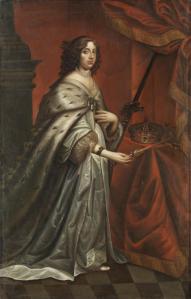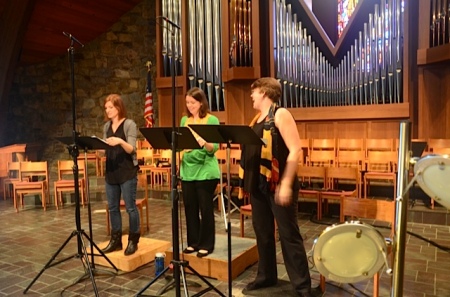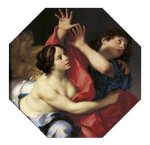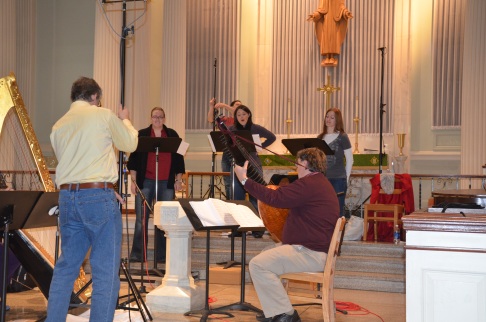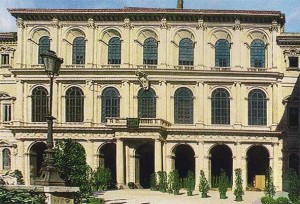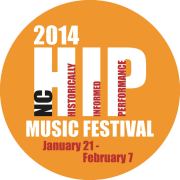 Armonia Celeste is collaborating with the Duke Vespers Ensemble as part of the North Carolina HIP (Historically Informed Performance) Festival in the Raleigh-Durham Triangle Area. The Festival runs from January 21 to February 7, and features a wide variety of performances by well-known ensembles. Concerts range from Handel’s opera Theodora, with the English Concert, to a new contemporary concerto for period instruments by Stephen Jaffe, and take place in various venues in Durham and Chapel Hill. See the complete listing at: http://triangleartsandentertainment.org/event/2014-north-carolina-hip-music-festival/.
Armonia Celeste is collaborating with the Duke Vespers Ensemble as part of the North Carolina HIP (Historically Informed Performance) Festival in the Raleigh-Durham Triangle Area. The Festival runs from January 21 to February 7, and features a wide variety of performances by well-known ensembles. Concerts range from Handel’s opera Theodora, with the English Concert, to a new contemporary concerto for period instruments by Stephen Jaffe, and take place in various venues in Durham and Chapel Hill. See the complete listing at: http://triangleartsandentertainment.org/event/2014-north-carolina-hip-music-festival/.
Our concert, “Roman Vespers in the Seventeenth Century,” will be performed in Durham on Friday, February 7, at 8:00 p.m. in the Duke Memorial United Methodist Church.
It has been an interesting challenge to find a program that would unite the forces of the Duke Vespers Ensemble and Armonia Celeste. The Duke Vespers Ensemble, directed by Brian Schmidt, provides service music for the Duke Chapel, and Armonia Celeste is primarily a group that is focused on Italian secular music for seventeenth-century Rome—slightly different focuses. Luckily, there was a logical link to be found in the seventeenth-century Vespers tradition, which unites the riches of the sacred music repertory for three sopranos with the seventeenth-century Vespers choral repertory. A concert based on this Vespers tradition provides the structure for a program that involves both this wonderful music and these two ensembles.
In the middle of the seventeenth century, Rome was a musical epicenter of festive, dramatic works of exceptional quality that often employed large performing forces. This style permeated operas, cantatas, masses, and concerti, but found its special focus in the great Sunday evening Vesper services, especially at St. Peter’s and other important churches. The greatest Roman composers often reserved their best works for these services. Five psalms—Dixit Dominus, Beatus Vir, Confitebor, Laudate Pueri, and Laudate Dominum—are commonly at the heart of the Vespers service. At major services, the psalms were sung polyphonically and were generally paired with a chant antiphon that changed daily. However, in the more festive services, these antiphons were frequently replaced with sacred concerti, performed by solo voices and sometimes accompanied by instruments. In the service, the psalms were always followed by the Magnificat, the Marian canticle found in the Gospel according to Luke. Other elements in the service, such as hymns, a Bible reading, and a homily or sermon were also often found. The service ended with a blessing.
It is this basic overall form that organizes our program. The five psalms are being sung using larger ensembles on four or five parts. The music of the sixteenth-century Roman composers, Felice Anerio (who followed Palestrina as the official composer for the papal choir) and Tomas Luis de Victoria, is included because their fame led to their music being performed for decades after their deaths, especially in Rome. (Victoria was engaged at the Pontifical Seminary and the Collegio Gemanico [see below] before returning to Spain.) These works were composed and performed in alternatim style, where the verses alternate between polyphony and chant. We have also included psalms of the most famous Venetian composers, Claudio Monteverdi and Giovanni Rovetta, whose music was performed though out Italy and certainly reached Rome.

The composer Giacomo Carissimi
Aside from these composers, the musical focus of our Vespers is on the works of the most important seventeenth-century Roman composers: Virgilio Mazzochi and Giacomo Carissimi. Mazzochi’s “Surge amica mea” will be performed as the opening hymn; Carissimi’s “Si linguis” will stand in as the antiphon/Bible reading, while his “Quo tam loetus” serves as the little sermon. The magnificent double choir setting of the Magnificat, one of Carissimi’s Vespers masterpieces, is the focus at end of the service, followed by his lovely blessing, “Benedictus Deus.” Instrumental pieces were sometimes included, and we are using the trio sonata “La Chorista” by Lelio Colista, a well-known Roman composer and lute player. Virgilio Mazzochi was one of the most important composers in the first half of the century; he was the maestro di cappella at St. Peter’s, and also had connections to the Cardinal Francesco Barberini. Probably the most famous composer in the middle of the century was Giacomo Carissimi, head of music at the Collegio Germanico, the Jesuit training facility for clergy from German-speaking countries that included music as a central part of the training.
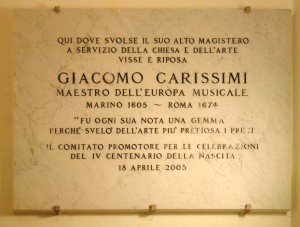
Commemorative plaque on the 400th anniversary of the composer’s birth. “Every note was a gem”
Much of his music, including the famous oratorios Jepthe and Jonas, was first performed at the Collegio. He also became the head of chamber music for the Swedish Queen Christina upon her abdication and move to Rome. When Carissimi died, the Collegio decreed that they would keep all of his music manuscripts and none were to be published—a tragic policy as it turns out, since his manuscripts were eventually given to nineteenth-century fishmongers for wrapping their wares. The original manuscripts disappeared forever. Luckily, much of his music was copied by students and others, and was widely distributed across Europe. Despite the great amount of music left to us, one wonders how much was lost to the world.
–Lyle and Patricia Nordstrom
